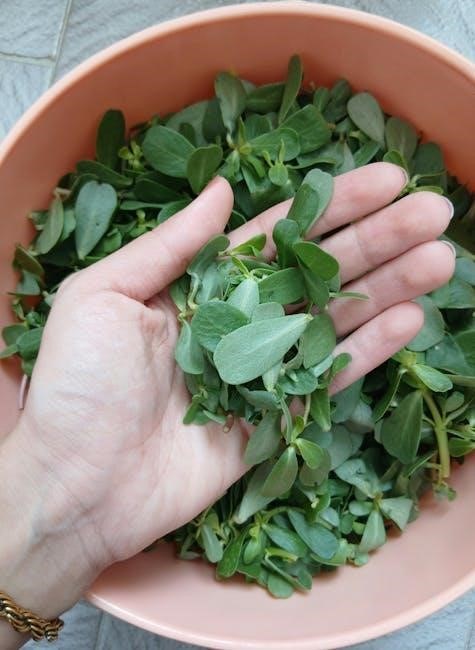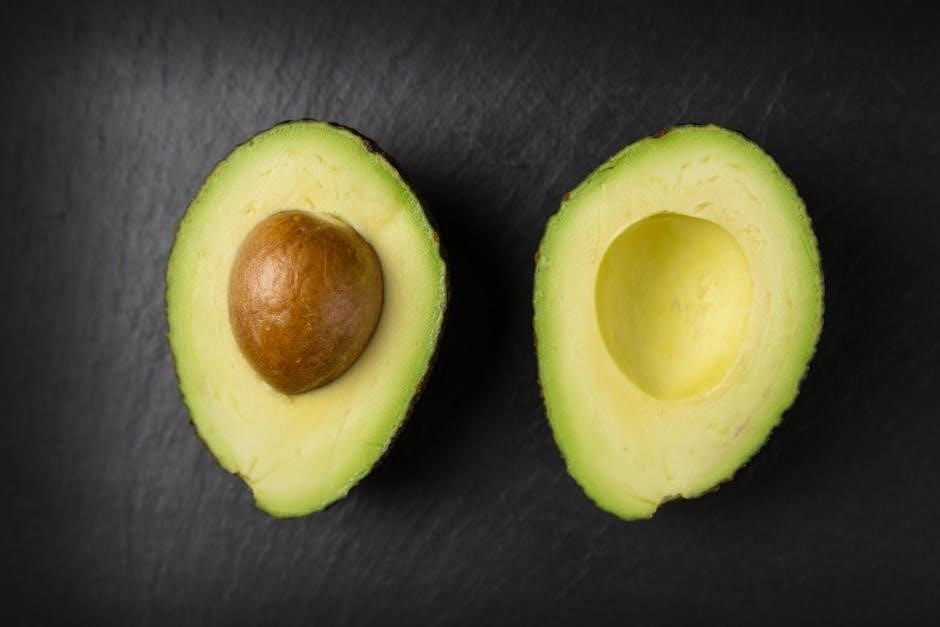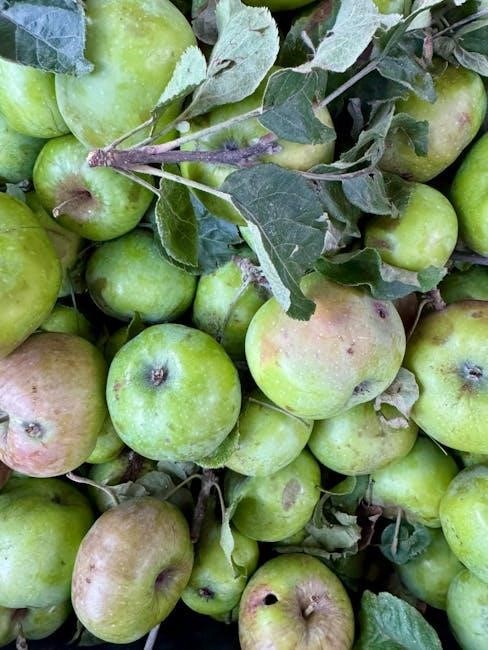Lipedema is a chronic condition characterized by abnormal fat cell growth‚ causing pain and swelling․ Management involves a multi-faceted approach‚ including diet‚ exercise‚ therapies‚ and lifestyle changes․
Understanding Lipedema: Definition and Overview
Lipedema is a chronic‚ progressive condition characterized by the abnormal growth of fat cells beneath the skin‚ primarily affecting women․ It leads to pain‚ swelling‚ and discomfort‚ often mistaken for obesity․ Unlike typical fat‚ lipedema does not respond to diet or exercise‚ making it challenging to manage․ The condition progresses over time‚ causing uneven fat distribution‚ tenderness‚ and difficulty in performing daily activities․ It is not caused by poor lifestyle choices but is linked to genetic and hormonal factors․ Early diagnosis is crucial‚ as untreated lipedema can severely impact quality of life․ Understanding its definition and progression is the first step toward effective management and symptom relief․
The Importance of Diet in Managing Lipedema
Diet plays a crucial role in managing lipedema‚ even though it does not reduce the abnormal fat directly․ A well-structured diet helps alleviate symptoms by reducing inflammation‚ swelling‚ and pain․ Anti-inflammatory diets‚ low-carbohydrate‚ and high-fat plans‚ such as the ketogenic diet‚ are often recommended․ These approaches aim to stabilize blood sugar levels and minimize water retention․ Reducing sodium intake and avoiding processed foods can also help decrease swelling․ While diet cannot cure lipedema‚ it significantly supports symptom management and improves overall well-being․ Combining dietary changes with other therapies and lifestyle adjustments creates a comprehensive strategy to tackle the condition effectively․ A tailored nutritional plan is essential for optimizing comfort and slowing disease progression․

Key Dietary Recommendations for Lipedema
Focus on whole‚ unprocessed foods‚ anti-inflammatory options‚ and low-sodium intake․ Prioritize fresh vegetables‚ lean proteins‚ and healthy fats to reduce swelling and inflammation effectively․
Reducing Inflammation Through Anti-Inflammatory Diets
An anti-inflammatory diet is crucial for managing lipedema‚ as it helps reduce swelling and pain․ Focus on consuming omega-3 rich foods like fatty fish (salmon‚ mackerel)‚ flaxseeds‚ and walnuts․ Antioxidant-rich foods‚ such as berries‚ leafy greens‚ and colorful vegetables‚ also play a key role․ Incorporate herbs and spices like turmeric and ginger‚ known for their anti-inflammatory properties․ Avoid pro-inflammatory foods‚ including processed sugars‚ refined carbohydrates‚ and alcohol․ Staying hydrated with water and herbal teas further supports inflammation reduction․ By prioritizing whole‚ nutrient-dense foods‚ individuals can effectively mitigate lipedema-related inflammation and improve overall well-being․
The Role of Low-Carbohydrate and High-Fat Diets
Low-carbohydrate‚ high-fat (LCHF) diets have shown promise in managing lipedema․ By reducing carb intake‚ these diets lower insulin levels‚ which can contribute to fat accumulation․ Emphasizing healthy fats‚ such as avocados‚ nuts‚ and olive oil‚ helps maintain energy while minimizing inflammation․ Studies suggest that LCHF diets may be more effective than low-glycemic index diets for lipedema patients․ This approach supports fat metabolism and reduces water retention‚ alleviating symptoms like swelling and pain․ Combining LCHF with anti-inflammatory foods further enhances benefits‚ making it a valuable strategy for those seeking to manage lipedema effectively․
Importance of Avoiding High-Sodium Foods
High-sodium foods can exacerbate lipedema symptoms by increasing water retention and swelling․ Excess salt in processed meats‚ canned soups‚ and snacks contributes to fluid buildup‚ worsening discomfort․ Reducing sodium intake helps minimize swelling and alleviate pain․ Opting for fresh‚ whole foods instead of processed items is crucial․ Limiting sodium not only reduces fluid retention but also supports overall circulatory health․ Incorporating herbs and spices for flavor can help lower sodium dependence․ By prioritizing low-sodium choices‚ individuals with lipedema can better manage their condition and improve quality of life․ This dietary adjustment is a key component of a comprehensive management plan․
Benefits of a Keto Diet for Lipedema

A ketogenic diet has shown promise in managing lipedema by reducing inflammation and promoting fat metabolism․ By minimizing carbohydrate intake‚ the body shifts to burning fat for energy‚ which may help reduce abnormal fat deposits․ Studies suggest that keto diets can be more effective than low-glycemic index diets in alleviating symptoms․ The diet’s focus on high-fat‚ low-carb foods helps stabilize blood sugar levels‚ potentially reducing insulin-related inflammation․ Additionally‚ ketosis may improve lymphatic function‚ aiding in the reduction of swelling․ While more research is needed‚ many patients report improved symptoms and better pain management when adhering to a ketogenic lifestyle․ This dietary approach is emerging as a valuable tool in the fight against lipedema․
Incorporating Whole‚ Unprocessed Foods
Emphasizing whole‚ unprocessed foods is crucial for managing lipedema․ These foods‚ such as fresh fruits‚ vegetables‚ lean proteins‚ and whole grains‚ provide essential nutrients without triggering inflammation․ Avoiding processed foods reduces exposure to harmful additives‚ sugars‚ and sodium‚ which can exacerbate swelling․ Whole foods support balanced blood sugar levels and promote a healthy gut microbiome‚ further aiding in symptom relief․ Incorporating a variety of colorful vegetables and fermented foods can enhance lymphatic function and overall well-being․ By focusing on natural‚ nutrient-dense options‚ individuals can create a dietary foundation that supports their body’s needs while minimizing lipedema-related discomfort and inflammation․
Specific Foods to Focus On
Focus on nutrient-rich foods like fresh fruits‚ vegetables‚ and lean proteins to reduce inflammation and support lymphatic health in managing lipedema effectively․
Fresh Fruits and Vegetables: Essential Nutrients
Fresh fruits and vegetables are vital for managing lipedema due to their high content of vitamins‚ minerals‚ and antioxidants․ These foods help reduce inflammation‚ a key factor in lipedema symptoms․ Incorporating a variety of colorful produce ensures a broad intake of essential nutrients․ Berries‚ leafy greens‚ and citrus fruits are particularly beneficial for their anti-inflammatory properties․ Additionally‚ fruits and vegetables support detoxification and lymphatic drainage‚ which can alleviate swelling․ Their high water content also aids hydration‚ further reducing swelling․ Including a wide range of fresh‚ seasonal produce in meals helps maintain a balanced diet and supports overall health․ Avoiding processed or high-sugar options is crucial to maximize benefits․

Lean Protein Sources and Their Benefits
Lean protein sources are essential for managing lipedema‚ as they support fat metabolism and muscle maintenance․ Foods like chicken‚ turkey‚ fish‚ tofu‚ and legumes provide high-quality protein without excess fat․ These options help stabilize blood sugar levels‚ reducing inflammation and insulin resistance․ Protein-rich diets also aid in satiety‚ making it easier to avoid overeating․ Additionally‚ lean proteins promote lymphatic health‚ which is crucial for reducing swelling․ Eggs‚ Greek yogurt‚ and cottage cheese are also excellent choices‚ offering essential nutrients like omega-3 fatty acids and probiotics․ Incorporating lean proteins into meals helps maintain muscle mass‚ which supports overall metabolism and weight management․ This makes them a cornerstone of a lipedema-friendly diet‚ aiding in symptom relief and long-term health․
Whole Grains and Fiber-Rich Foods
Whole grains and fiber-rich foods play a crucial role in managing lipedema by stabilizing blood sugar levels and reducing inflammation․ Oats‚ quinoa‚ brown rice‚ and whole-grain bread are excellent choices‚ as they provide sustained energy and fiber․ Fiber helps regulate digestion‚ preventing bloating and water retention‚ which can exacerbate lipedema symptoms․ Additionally‚ whole grains are rich in antioxidants and nutrients that support overall health․ Incorporating foods like barley‚ rye‚ and whole-grain pasta can also help maintain low insulin levels‚ which is beneficial for fat metabolism․ Including a variety of fiber-rich foods in the diet promotes a balanced gut microbiome‚ further supporting lymphatic health and reducing swelling․ This makes whole grains a vital component of a lipedema-friendly dietary plan․
Fermented Foods for Gut Health

Fermented foods are rich in probiotics‚ which support gut health and improve digestion․ Yogurt‚ kefir‚ sauerkraut‚ and kimchi are excellent choices․ These foods enhance the gut microbiome‚ boosting immune function and reducing inflammation․ A healthy gut aids in better nutrient absorption and waste elimination‚ which can help alleviate lipedema symptoms․ Fermented foods also promote lymphatic drainage‚ supporting the body’s natural detoxification processes․ Incorporating these foods into your diet can reduce bloating and swelling‚ offering relief from lipedema-related discomfort․ Their anti-inflammatory properties further contribute to managing the condition effectively․ Overall‚ fermented foods are a valuable addition to a lipedema-friendly diet‚ supporting both gut and overall health․
Lifestyle and Additional Considerations
Lifestyle adjustments play a crucial role in managing lipedema․ Hydration reduces swelling‚ while moderate exercise improves lymphatic flow․ Avoiding alcohol and high-sodium foods further supports symptom relief and overall well-being․

Hydration and Its Impact on Swelling
Hydration is essential for managing lipedema-related swelling․ Drinking plenty of water helps flush toxins and maintain lymphatic function‚ reducing fluid retention․ Dehydration can worsen swelling and pain․ Aim for at least 8-10 glasses daily․ Herbal teas and fresh juices can supplement hydration․ Avoid sugary drinks that contribute to inflammation․ Proper hydration supports overall circulation and skin health‚ making it a cornerstone of lipedema management․ Incorporating hydrating foods like cucumbers and watermelon can also aid in maintaining fluid balance․ Consistent hydration habits can significantly alleviate swelling and improve comfort for individuals with lipedema‚ enhancing the effectiveness of other dietary and lifestyle strategies․

Exercise and Physical Activity Guidelines
Regular exercise is crucial for managing lipedema symptoms‚ as it promotes lymphatic drainage and reduces swelling․ Low-impact activities like swimming‚ cycling‚ and yoga are ideal‚ as they minimize joint strain․ Avoid high-impact exercises that may worsen pain or damage affected areas․ Gentle stretching and movements that improve circulation can also alleviate discomfort․ Strength training with light weights or resistance bands can help maintain muscle tone without bulk․ Activities should be tailored to individual tolerance‚ avoiding overexertion․ Consistent physical activity enhances overall well-being and complements dietary efforts in managing lipedema effectively․ Always consult a healthcare professional to design a personalized exercise plan that suits your condition and lifestyle․
Limiting Alcohol and Sugary Foods
Limiting alcohol and sugary foods is essential for managing lipedema․ Alcohol can increase inflammation and water retention‚ exacerbating swelling․ Sugary foods raise insulin levels‚ promoting fat storage and worsening symptoms․ Both contribute to metabolic imbalances that hinder progress․ Reducing or eliminating these from your diet helps control inflammation and supports fat metabolism․ Opt for natural sugars found in fruits and vegetables instead of processed alternatives․ Moderation is key‚ as excessive consumption can undermine dietary efforts․ Balancing nutrient intake while avoiding triggers supports overall well-being and symptom relief in lipedema management․

Monitoring and Maintenance
Regularly tracking symptoms and dietary adherence is crucial․ Adjustments may be needed to maintain progress‚ ensuring long-term management of lipedema effectively․
Tracking Progress and Adjusting the Diet
Monitoring progress is essential for managing lipedema effectively․ Keep a journal to track symptoms‚ weight‚ and measurements․ Regularly assess how dietary changes impact swelling and pain․ Use apps or tools to log food intake and physical activity․ Adjustments may be needed based on individual responses‚ such as reducing carbohydrate intake further or incorporating more anti-inflammatory foods․ Consult with a healthcare provider or dietitian to evaluate progress and refine the diet plan․ Consistent tracking helps identify patterns and ensures long-term adherence to the dietary strategy․ Adjustments should focus on optimizing fat loss‚ reducing inflammation‚ and improving overall well-being․ This iterative process is key to achieving and maintaining lipedema management goals․

Long-Term Management Strategies
Long-term management of lipedema requires a sustainable approach to diet‚ lifestyle‚ and health monitoring․ A balanced diet focusing on whole‚ anti-inflammatory foods‚ paired with regular physical activity‚ helps maintain progress․ Hydration is crucial to reduce swelling‚ while avoiding high-sodium and sugary foods supports overall well-being․ For some‚ a ketogenic or very-low-carbohydrate diet may be beneficial for sustained fat loss and inflammation control․ Regular check-ups with healthcare providers ensure adjustments are made as needed․ Mental health support is also vital‚ as chronic conditions can impact emotional well-being․ Consistency and patience are key‚ as lipedema management is a lifelong journey requiring dedication and adaptability to achieve optimal results and improve quality of life․

A well-structured diet focusing on anti-inflammatory‚ low-carbohydrate‚ and ketogenic approaches significantly supports lipedema management‚ aiding in symptom reduction and improving overall well-being for individuals with this condition effectively․
The Importance of Professional Guidance
Consulting healthcare professionals experienced in lipedema is crucial for an accurate diagnosis and tailored treatment plans․ While certain diets‚ like the ketogenic or low-carbohydrate approaches‚ show promise in managing symptoms‚ individual needs vary‚ and professional guidance ensures a personalized strategy․ Experts can help navigate the complexities of diet‚ exercise‚ and therapies‚ avoiding potential pitfalls․ Without professional oversight‚ patients may adopt ineffective or harmful practices‚ delaying progress․ Seeking advice from specialists ensures evidence-based recommendations‚ optimizing outcomes and improving quality of life for those with lipedema․ Collaborating with a healthcare team fosters a comprehensive and sustainable management plan․

